
Maria Anna of Bavaria was a politically active Archduchess of Austria by her marriage to Archduke Charles II of Austria. She played an important role in the Counter-Reformation in Austria.

Anne of Bohemia and Austria was a Duchess of Luxembourg in her own right and, as a consort, Landgravine of Thuringia and of Saxony.

Ludwig von Erlichshausen (1410–1467) was the 31st Grand Master of the Teutonic Knights, serving from 1449/1450 to 1467.

ArchduchessMaria Elisabeth of Austria, was the governor of the Austrian Netherlands between 1725 and 1741.
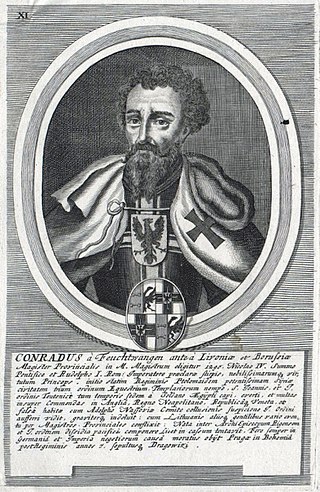
Konrad von Feuchtwangen was the 13th Grand Master of the Teutonic Knights from 1290 to 1296.

Wittelsbach-Hapsburg aristocrat Ernest of Bavaria was Prince-Elector-Archbishop of the Archbishopric of Cologne and, as such, Archchancellor of the Holy Roman Empire and Duke of Westphalia, from 1583 to 1612 as successor of the expelled Archbishop Gebhard Truchsess von Waldburg.
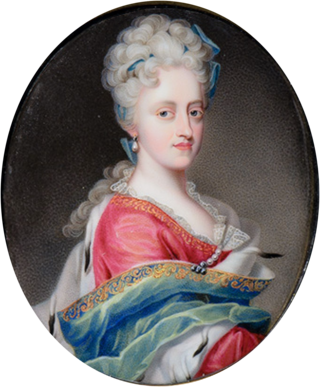
Maria Magdalena of Austria was a governor of Tyrol and daughter of Leopold I, Holy Roman Emperor and his third wife Eleonor Magdalene of the Palatinate-Neuburg. She died unmarried.
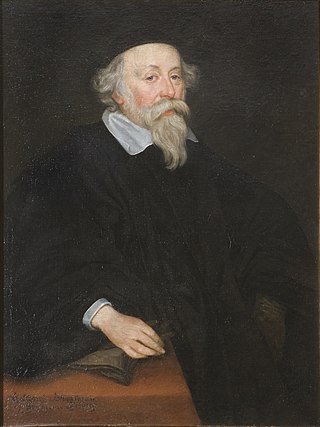
John Casimir, Count Palatine of Zweibrücken-Kleeburg was the son of John I, Count Palatine of Zweibrücken and his wife, Duchess Magdalene of Jülich-Cleves-Berg. He was married to Catherine of Sweden and was the founder of a branch of Wittelsbach Counts Palatine often called the Swedish line, because it gave rise to three subsequent kings of Sweden, but more commonly known as the Kleeburg line.
The County of Gützkow was a county located within the Duchy of Pomerania in the High Middle Ages. It was established in 1129 from the Castellany of Gützkow. Following the death of its last count in 1359, it was re-established into the Vogtei Gützkow.
Conrad of Vechta was Bishop of Verden (1400–1402/1407), Bishop of Olomouc (1408–1413), Archbishop of Prague (1413–1421), and Master of the Mint (1401–1403) and Chancellor (1405–1412) of the Kingdom of Bohemia.

Archduchess Catherine Renata of Austria was a member of the House of Habsburg.

Sigmund von Birken was a German poet of the Baroque. He was born in Wildstein, near Eger, and died in Nuremberg, aged 55.

Konrad Hubert, also Konrad Huber, Konrad Huober, or Konrad Humbert, was a German Reformed theologian, hymn writer and reformer. He was for 18 years the assistant of Martin Bucer at St. Thomas, Strasbourg.
Franz Michael Leuchsenring was a German writer of the German Enlightenment.
Conrad of Pfullingen, sometimes Cuno of Pfullingen, was the archbishop of Trier briefly in 1066.
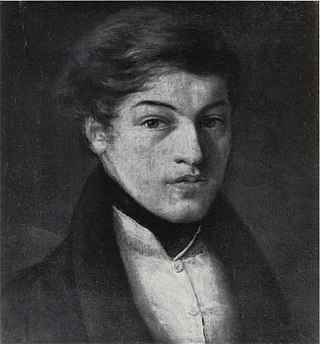
Friedrich Mosbrugger, also known as Fritz Moosbrugger was a German portrait and genre painter in the Realistic style. He came from a family that had a widespread reputation as builders, plasterers and painters. His brother Joseph was also a painter, and his brother August was an architect.
Burchard of Ursperg, also called Burchard of Biberach (c.1177–1230/1) was a German priest and chronicler. His Ursperger Chronicle is the most important universal history of the late Staufer era.

Friedrich Konrad Griepenkerl, sometimes known as Friedrich Konrad Griepenkerl, was a German Germanist, pedagogue, musicologist and conductor.
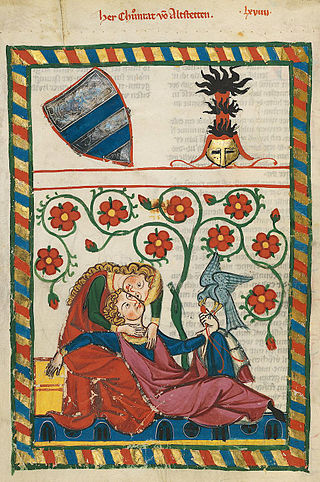
Konrad von Altstetten was a German petty nobleman and Middle High German lyric poet in the Minnesang tradition. He belonged to a family of vassals of the Abbey of Saint Gall, based in Altstätten. His poetry, light in style, was influenced by Gottfried von Neifen. Three of his songs are preserved in the Codex Manesse.

Konrad von Burgsdorff (1595-1652) was a Chief Chamberlain and Privy Councilor for the Electorate of Brandenburg, in command of all the fortresses there, and a Knight in the Order of Saint John. He was also a member of the Fruitbearing Society, devoted to standardizing the German language.















